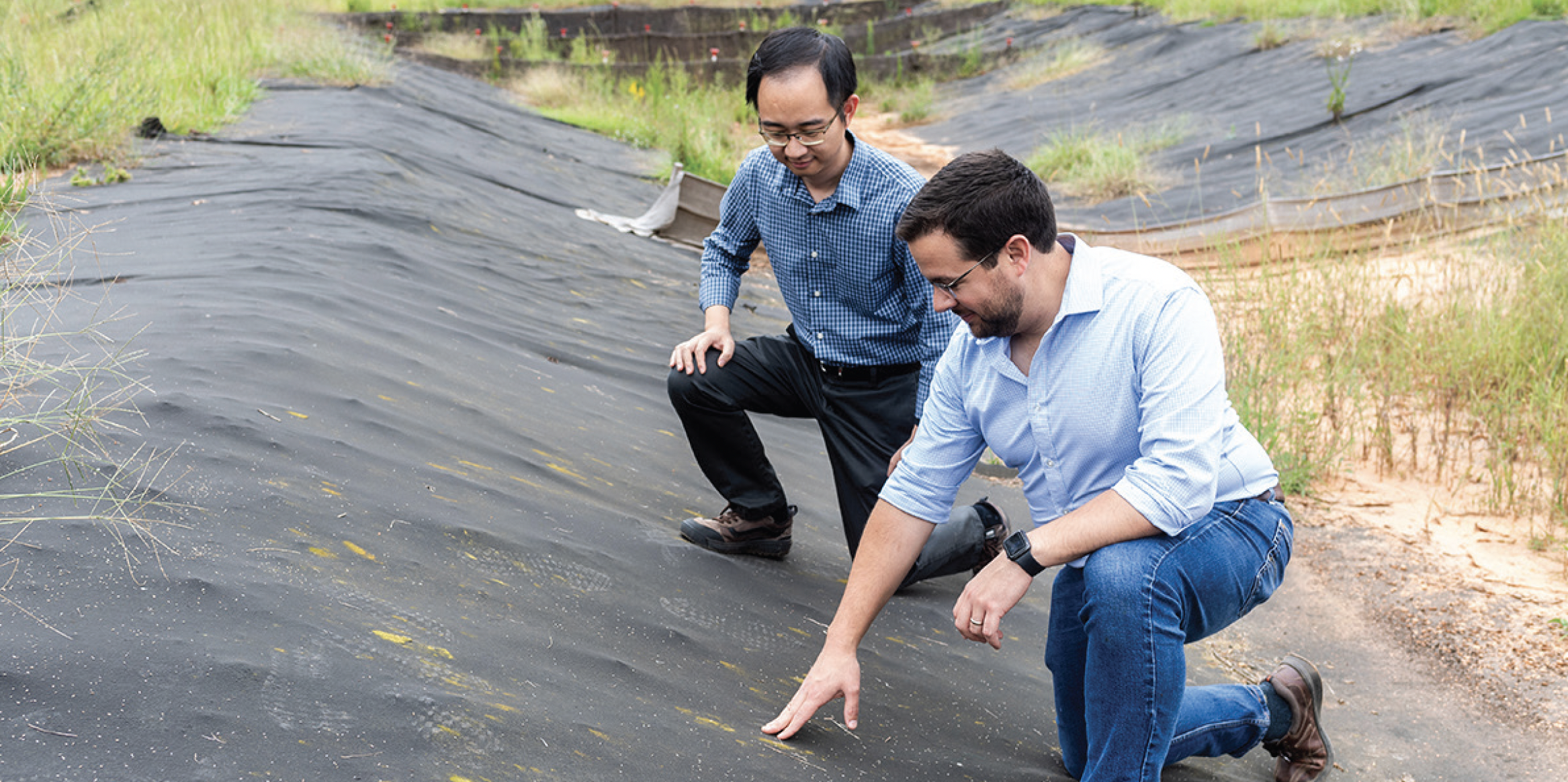Safeguarding the Gulf Coast ecosystem
Civil and Environmental Engineering
By Dustin Duncan

Stormwater runoff from urbanized areas flows directly into streams, creeks, rivers, lakes and oceans, carrying excessive pollutants including nutrients such as nitrogen and phosphorus.
Shiqiang Zou, assistant professor of civil and environmental engineering (CEE) and Michael Perez, associate professor in CEE, are collaborating on a three-year, $1.3 million project supported by the Environmental Protection Agency to upgrade geotextiles to filter excessive nutrients from stormwater runoff into the Gulf Coast ecosystem.
Zou said the project’s groundbreaking nature arises from its innovative design of a polylactic acid, bioplastic-based geotextile embedded with metal oxides, which will remove phosphorus from stormwater runoff. Phosphorus and other nutrients can fuel the growth of harmful algal blooms that deplete oxygen levels, disrupt aquatic ecosystems and endanger aquatic life. While geotextiles are used at construction and industrial sites, Zou said they are primarily employed to control soil erosion while allowing rainwater runoff.
“If we can repurpose those geotextiles to not only prevent soil erosion but also use them as filters to retain nutrients in the water and prevent them from reaching the Gulf Coast, we would kill two birds with one stone,” Zou said.
Researchers

